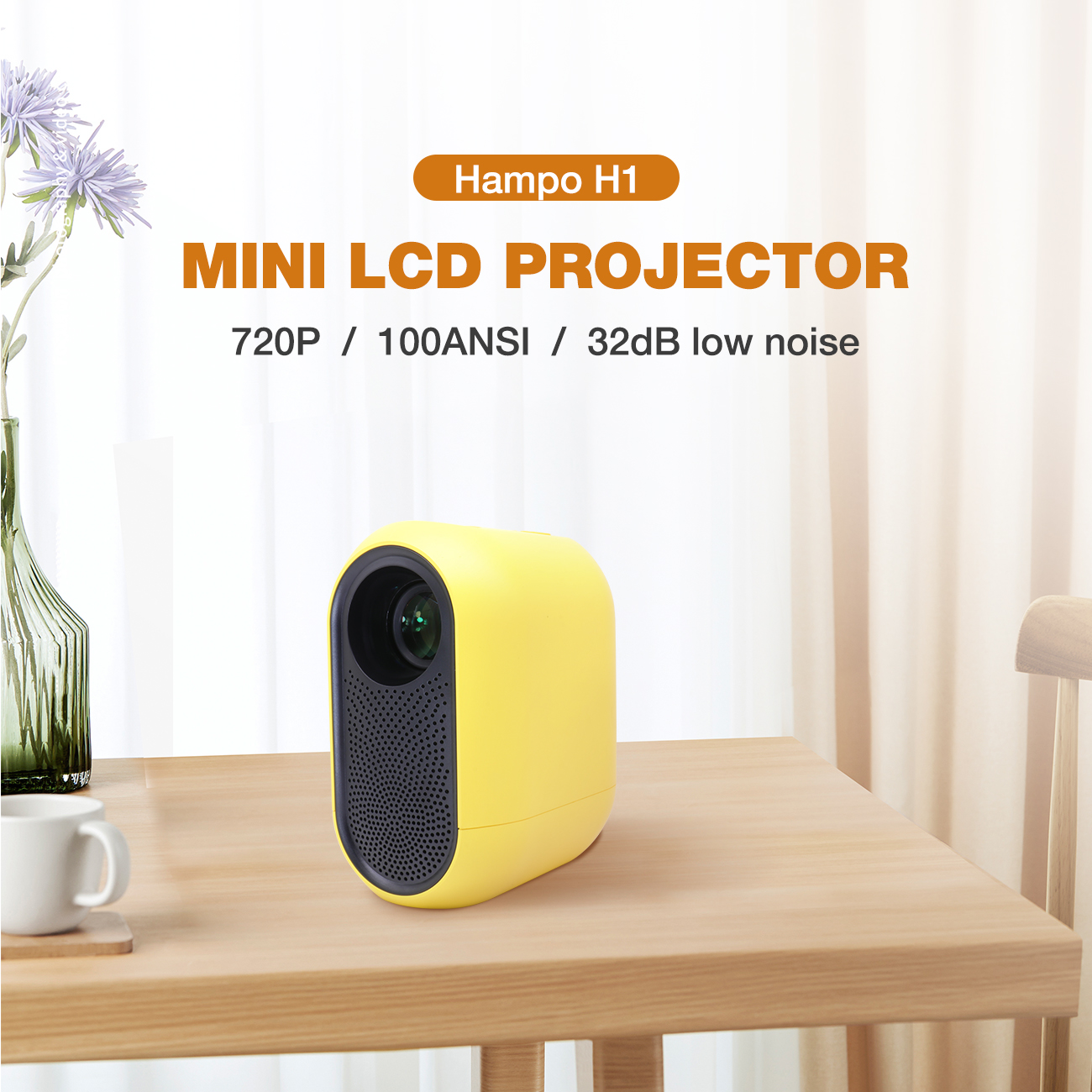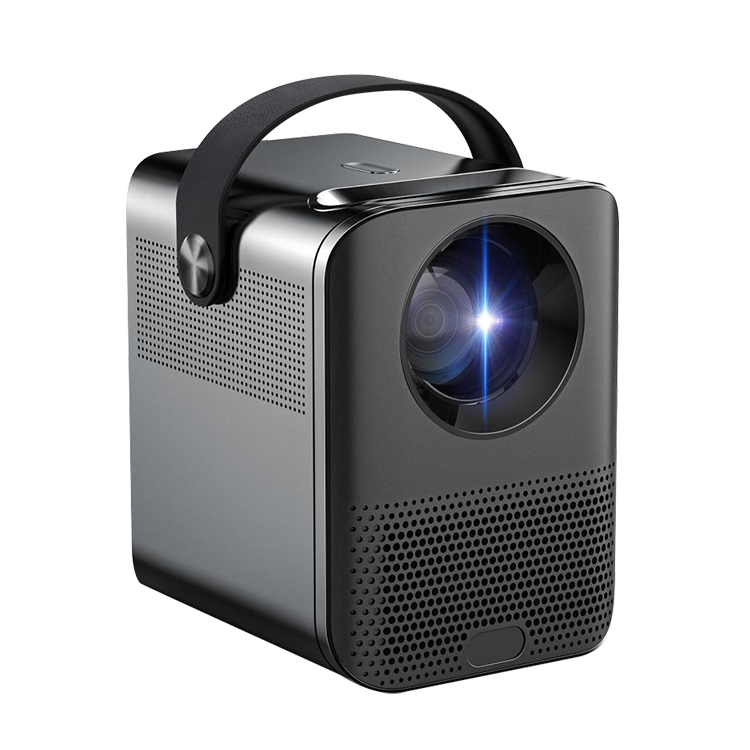What is the difference between an LCD projector and a DLP projector? What is the principle of LCD projection and DLP projection?
LCD (short for Liquid Crystal Display) liquid crystal display.
First of all, what is LCD? We know that matter has three states: solid state, liquid state, and gas state. Although the arrangement of the center of mass of liquid molecules does not have any regularity, if these molecules are elongated (or flat), their molecular orientation may be regular sex. So we can subdivide the liquid state into many types. Liquids with irregular molecular orientations are directly called liquids, while liquids with directional molecules are called "liquid crystals", also referred to as "liquid crystals". Liquid crystal products are actually no strangers to us. The mobile phones and calculators we often see are all liquid crystal products. Liquid crystal was discovered by Austrian botanist Reinitzer in 1888. It is an organic compound with regular molecular arrangement between solid and liquid. The principle of liquid crystal display is that the liquid crystal will show different light characteristics under the action of different voltages. Under the action of different electric currents and electric fields, the liquid crystal molecules will be arranged in a regular rotation of 90 degrees, resulting in a difference in light transmittance, so that the difference between light and dark will be generated under the power ON/OFF, and each pixel can be controlled according to this principle to form the desired image.
LCD liquid crystal projector is the product of the combination of liquid crystal display technology and projection technology. It uses the electro-optical effect of liquid crystal to control the transmittance and reflectivity of liquid crystal unit through the circuit, so as to produce images with different gray levels. The main function of LCD projector is The imaging device is a liquid crystal panel.
Principle
The principle of single LCD is very simple, that is to use a high-power light source to irradiate the LCD panel through the condenser lens. Since the LCD panel is light-transmitting, the picture will be irradiated, and the image will be formed on the screen through the front focusing mirror and lens.
3LCD decomposes the light emitted by the bulb into three colors of R (red), G (green), and B (blue), and makes them pass through their respective liquid crystal panels to give them shapes and actions. Since these three primary colors are constantly projected, light can be used efficiently, resulting in bright and clear images. The 3LCD projector has the characteristics of bright, natural and soft images.
Advantage:
① In terms of screen color, the current mainstream LCD projectors are all three-chip machines, using independent LCD panels for the three primary colors of red, green, and blue. This allows the brightness and contrast of each color channel to be adjusted individually, and the projection is very good, resulting in high fidelity colors. (DLP projectors of the same grade can only use one piece of DLP, which is largely determined by the physical properties of the color wheel and the color temperature of the lamp. There is nothing to adjust, and only a relatively correct color can be obtained. But with the same Vibrant tones are still lacking at the edges of the image area compared to more expensive LCD projectors.)
② The second advantage of LCD is its high light efficiency. LCD projectors have higher ANSI lumen light output than DLP projectors with lamps of the same wattage.
Shortcoming:
①The black level performance is too poor, and the contrast is not very high. Blacks from LCD projectors always look dusty, with shadows appearing dark and detailless.
②The picture produced by the LCD projector can see the pixel structure, and the look and feel is not good. (The audience seems to be watching the picture through the pane)
DLP Projector
DLP is the abbreviation of "Digital Light Processing", that is, digital light processing. This technology first processes the image signal digitally, and then projects the light. It is based on the digital micromirror component developed by TI (Texas Instruments) - DMD (Digital Micromirror Device) to complete the technology of visual digital information display. DMD digital micromirror device is a special semiconductor component specially produced and developed by Texas Instruments. A DMD chip contains many tiny square mirrors. Each micromirror in these mirrors represents a pixel. The area of a pixel is 16μm×16, and the lenses are closely arranged in rows and columns, and can be switched and rotated in two states of on or off by the corresponding memory control, so as to control the reflection of light. The principle of DLP is to pass the light source emitted by the light through a condensing lens to homogenize the light, and then pass a color wheel (Color Wheel) to divide the light into RGB three colors (or more colors), and then project the color on the DMD by the lens , and finally projected into an image through a projection lens.
Principle
According to the number of DMD digital micromirrors contained in the DLP projector, people divide the projector into a single-chip DLP projector, two-chip DLP projector and three-chip DLP projector.
In a single-chip DMD projection system, a color wheel is required to produce a full-color projected image. The color wheel consists of a red, green, and blue filter system, which rotates at a frequency of 60Hz. In this configuration, DLP works in sequential color mode. The input signal is converted into RGB data, and the data is written into the SRAM of the DMD in sequence. The white light source is focused on the color wheel through the focusing lens, and the light passing through the color wheel is then imaged on the surface of the DMD. When the color wheel rotates, red, green, and blue light are sequentially shot on the DMD. The color wheel and video image are sequential, so when red light hits the DMD, the lens is tilted "on" in the position and intensity that the red information should be showing, and the same goes for green and blue light and the video signal. Due to the persistence of vision effect, the human visual system concentrates red, green, and blue information and sees a full-color image. Through the projection lens, the image formed on the DMD surface can be projected onto a large screen.
A single-chip DLP projector contains only one DMD chip. This chip is closely arranged with many tiny square reflective lenses on the electronic node of a silicon chip. Each reflective lens here corresponds to a pixel of the generated image, so If a digital micromirror DMD chip contains more reflective lenses, the higher the physical resolution that the DLP projector corresponding to the DMD chip can achieve.
Advantage:
DLP projector technology is reflective projection technology. The application of reflective DMD devices, DLP projectors have the advantages of reflection, excellent in contrast and uniformity, high image definition, uniform picture, sharp color, and image noise disappears, stable picture quality, accurate digital images can be continuously reproduced , and last forever. Since ordinary DLP projectors use a DMD chip, the most obvious advantage is that they are compact, and the projector can be made very compact. Another advantage of DLP projectors is smooth images and high contrast. With high contrast, the visual impact of the picture is strong, there is no sense of pixel structure, and the image is natural.
Shortcoming:
The most important thing is rainbow eyes, because DLP projectors project different primary colors onto the projection screen through the color wheel, and people with sensitive eyes will see a color-like rainbow-like halo. Secondly, it depends more on the quality of DMD, the color adjustment ability and rotation speed of the color wheel.
Post time: Apr-07-2023









